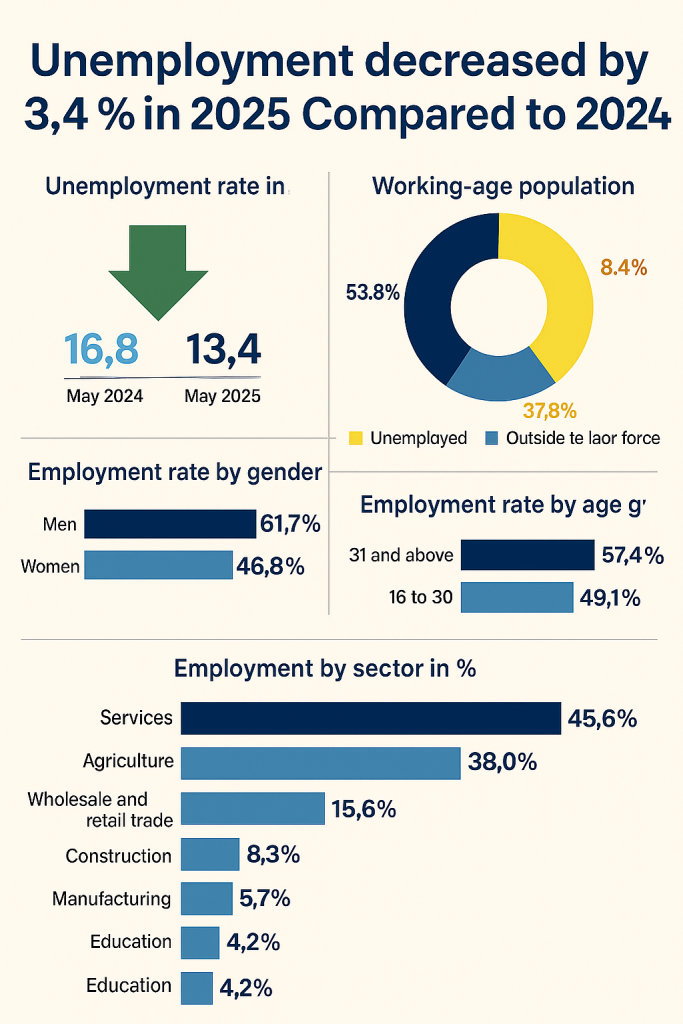By Annonciata Byukusenge
The employment situation in Rwanda shows that unemployment has decreased to 3.4%, according to a Labour Force Survey – 2025 (Q2) conducted and presented by the National Institute of Statistics of Rwanda (NISR), with 53.8% of the population having a job by May 2025, up from 52.0% at the same time in 2024.
According to the report, the total working-age population is approximately 8.5 million. Among them, about 4.5 million people, representing 53.8% were employed. Around 710,000 individuals were unemployed, while another 3.2 million were classified as outside the labor force. This group includes prisoners, students, those not seeking work, retirees, and people with disabilities who prevent them from working.
The report also shows a 1.8% increase in employment, from 52.0% in May 2024 to 53.8% in May 2025. There was also a slight increase in the number of people outside the labor force, from 37.5% to 37.8%, which NISR attributes to individuals engaged in informal agriculture.
The findings show that 61.7% of men were employed, compared to 46.8% of women. The number of employed men increased by 1.3%, while employment among women increased by 2.2%. The gender gap in employment stands at 14.9%, marking a decrease of 0.9% compared to the same period in 2024.

The majority of employed individuals are aged 31 and above, accounting for 57.4% of that age group, while 49.1% of people aged 16 to 30 are employed.
The services sector remains the leading employer, engaging 45.6% of the workforce, up from 44% in 2024. Agriculture, livestock, forestry, and fishing account for 38% of all employment. Wholesale and retail trade, along with informal trading activities, involve about 15.6% of workers.
Other employment sectors include construction (8.3%), transport (6.7%), manufacturing (5.7%), education (4.2%), domestic work (4.1%), and accommodation and food services (4.0%).
The unemployment rate has seen a significant decrease, dropping from 16.8% in May 2024 to 13.4% in May 2025. Unemployment remains higher among women (15.3%) than men (11.8%), and is most prevalent among youth (15.4%) compared to older adults (12.1%).
In rural areas, the unemployment rate is 13.3%, while in urban areas, it stands slightly higher at 13.7%.

